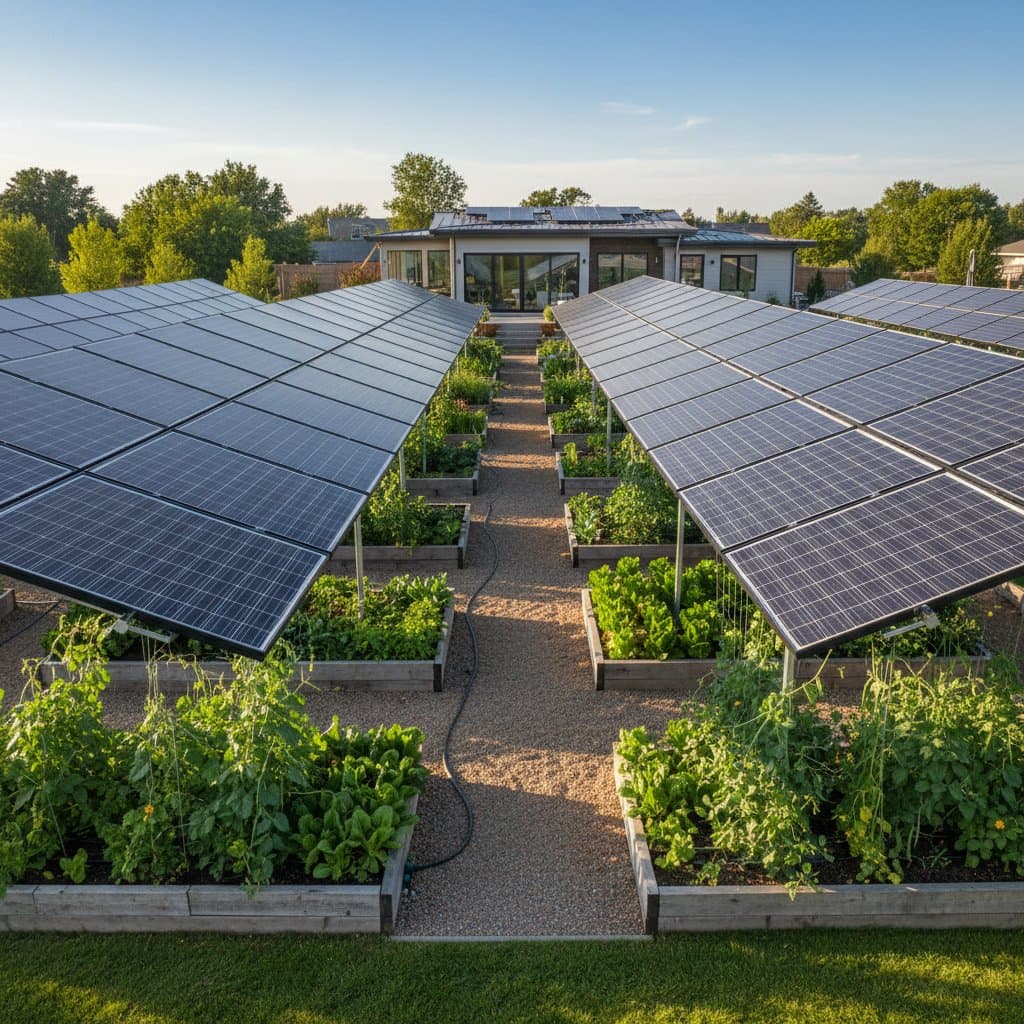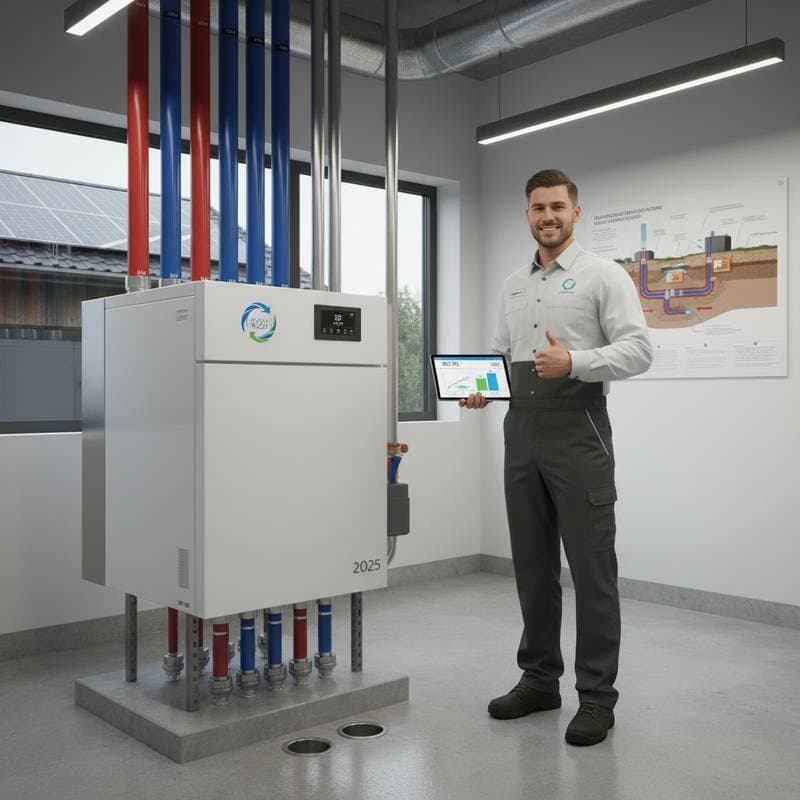Understanding Geothermal HVAC Systems
Geothermal HVAC systems utilize the stable temperatures found just below the Earth's surface to heat and cool homes efficiently. These systems consist of a ground heat exchanger, often in the form of loops buried underground, connected to a heat pump indoors. The heat pump transfers heat to or from the ground, depending on the season, providing consistent climate control without relying heavily on fossil fuels.
Traditional HVAC methods, such as air-source heat pumps or furnaces, fluctuate with outdoor temperatures, leading to higher energy demands. In contrast, geothermal systems maintain efficiency year-round because ground temperatures remain relatively constant. This foundational advantage positions geothermal as a reliable option for long-term home comfort.
Homeowners previously hesitated due to high upfront costs, but advancements have shifted this perspective. By 2025, these systems integrate seamlessly into various property types, from urban lots to rural estates.
The High Costs of the Past and What Changed
Early geothermal installations faced significant barriers, primarily from the expense of excavating land for ground loops. Drilling costs alone could exceed tens of thousands of dollars, especially in rocky or urban areas where specialized equipment was required. Material prices for durable piping and pumps also added to the financial burden.
In 2025, several factors have dramatically lowered these barriers. Improved drilling technologies, including horizontal directional drilling, reduce the need for extensive excavation. This method allows installers to snake loops under driveways or foundations with minimal disruption, cutting labor and site preparation expenses by up to 30 percent.
Additionally, economies of scale have driven down component costs. Mass production of high-efficiency heat pumps and corrosion-resistant polyethylene pipes has made materials more accessible. Suppliers now offer modular systems that fit standard home sizes, eliminating custom fabrication fees that once inflated quotes.
Regulatory changes have further eased the transition. Building codes in many regions now recognize geothermal as a preferred green technology, streamlining permitting processes and reducing administrative delays.
Technological Advancements Driving Affordability
Innovation in heat pump design has been pivotal. Modern units achieve coefficients of performance exceeding 4.0, meaning they deliver four units of heating or cooling for every unit of electricity consumed. This efficiency translates to lower operational costs over time.
Smart integration enhances usability. Geothermal systems now connect to home automation platforms, allowing remote monitoring and adjustments via mobile apps. Sensors optimize performance based on occupancy and weather data, further minimizing energy use.
Compact designs suit smaller properties. Vertical loop systems, which require less surface area than horizontal ones, have become standard for urban installations. These advancements not only lower initial costs but also shorten installation timelines from weeks to days.
Reliability has improved as well. Enhanced compressors and variable-speed fans reduce wear, extending system lifespans to 25 years or more for indoor components and 50 years for ground loops. This durability justifies the investment for forward-thinking homeowners.
Incentives and Financing That Make It Accessible
Government and utility incentives play a crucial role in 2025 affordability. The federal tax credit for geothermal installations covers 30 percent of costs, with no upper limit, directly offsetting upfront expenses. Many states offer additional rebates, sometimes reaching $5,000 per system.
Local utilities provide low-interest loans or on-bill financing, where monthly payments align with energy savings. For example, programs in California and New York allow homeowners to finance installations through utility bills, spreading costs over 10 to 15 years without high interest rates.
Private sector innovations include leasing options from manufacturers. Companies now offer geothermal-as-a-service models, where systems are installed at no initial cost, and homeowners pay a fixed monthly fee that often undercuts traditional utility bills.
These financial tools reduce the effective payback period to five to seven years, compared to 10 or more in previous years. Homeowners in qualifying areas can access free energy audits from utilities to confirm eligibility and potential savings.
Benefits Beyond Cost Savings
The advantages of geothermal HVAC extend far beyond economics. Energy efficiency reduces household carbon footprints by up to 60 percent compared to conventional systems. This aligns with growing demands for sustainable living, appealing to environmentally conscious buyers.
Indoor air quality improves due to the closed-loop design, which filters air more effectively and eliminates combustion byproducts. Quiet operation, with noise levels below 50 decibels, creates a peaceful home environment without the hum of outdoor units.
Property values rise with geothermal installations. Appraisals often add 5 to 10 percent to home worth, as buyers seek energy-efficient features. Insurance premiums may decrease due to lower fire risks and enhanced resilience during extreme weather.
Steps to Install Geothermal HVAC in Your Home
Assess your property first. Consult a certified geothermal contractor to evaluate soil conditions, available space, and heating needs. Tools like thermal imaging can map ideal loop placements without invasive digging.
- Obtain quotes from at least three licensed installers experienced in your region. Compare not just price but also warranties and efficiency ratings.
- Apply for incentives early. Visit government energy websites or contact local utilities to secure rebates and credits before signing contracts.
- Explore financing options. Discuss loan terms and leasing programs to find the best fit for your budget.
- Schedule installation during off-peak seasons, such as spring or fall, to minimize disruptions and potentially lower labor costs.
- Monitor performance post-installation. Use built-in diagnostics to ensure optimal operation and qualify for extended warranties.
Professional guidance ensures a smooth process. Many contractors now offer virtual consultations, making the journey straightforward even for first-time adopters.
Embracing Geothermal for Lasting Home Efficiency
Geothermal HVAC systems represent a smart evolution in home climate control, blending affordability with unmatched performance in 2025. Homeowners who adopt this technology gain immediate savings, superior comfort, and peace of mind from a resilient setup. As these systems become standard, the shift toward efficient, eco-friendly living accelerates, benefiting both individuals and the planet.








